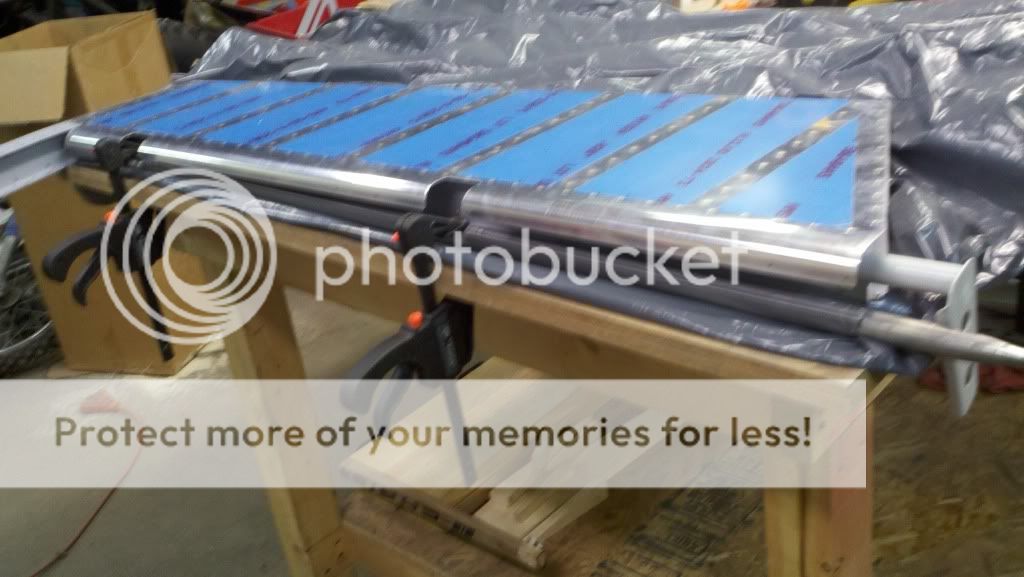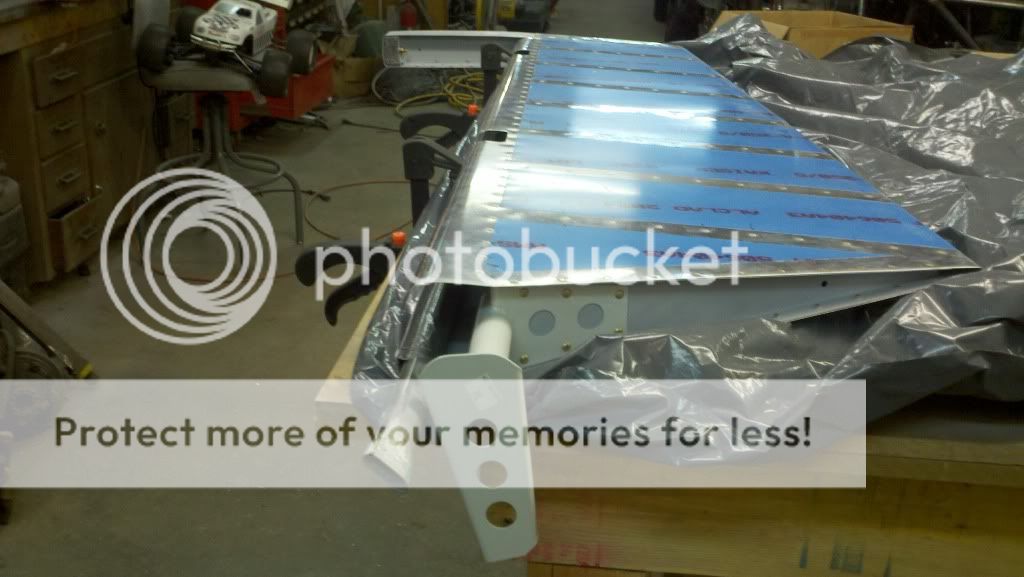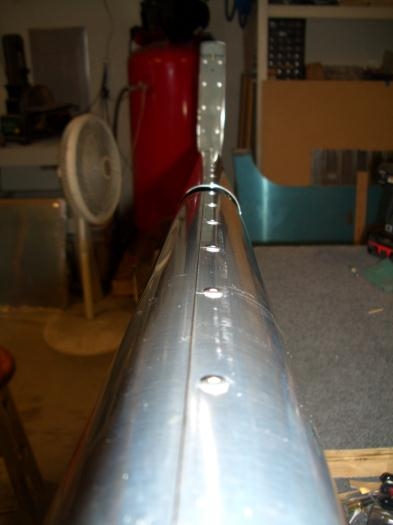Keep in mind, I am my worst critic, so take the following with a grain of salt.
I read up on how to do the roll again since it had been a while since doing the rudder. I remembered that I did not like rolling the rudder but that it was easier due to the thinner skins.
I again decided to use the DanH method and use J/U-Bolts and hold the pipe down while rolling. It worked OK on the rudder so I figured it would work OK on the elevators.
Since it was not fresh on my mind I felt like I was re-learning the roll all over again.
I think this time the pipe put too tight a radius on the skin, and since they are thicker than the rudder, they were less willing to massage out. Rather than really mess a part up, I decided to accept the roll and close them up.
They seemed to go together nicely and I have really nice seams too.
I just do not like the segmented radius look. I know that I nor anyone else will never see them once mounted.
I did a quick test with them in place on the Horizontal Stabilizer and they appear to not have any clearance/rubbing issues.
So I ask the group, are these good enough?
Left
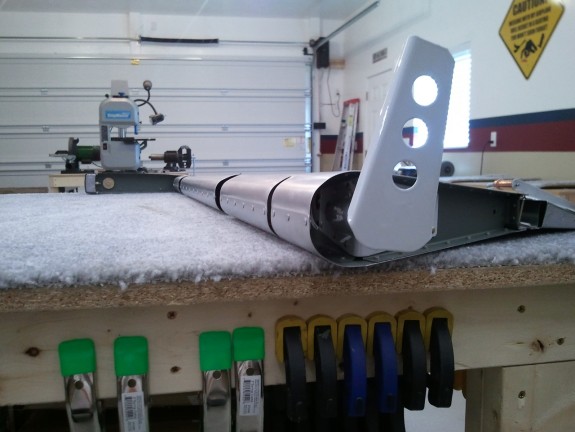
Right
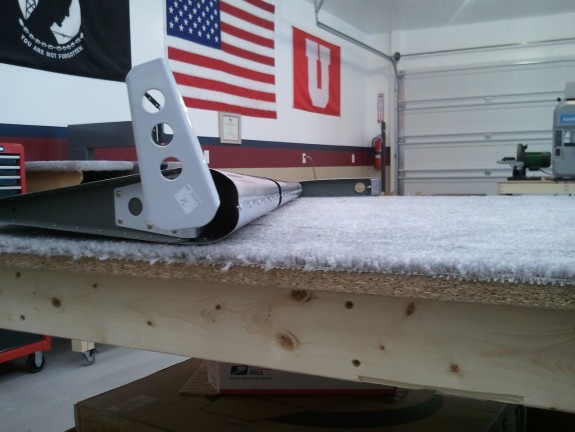
Both
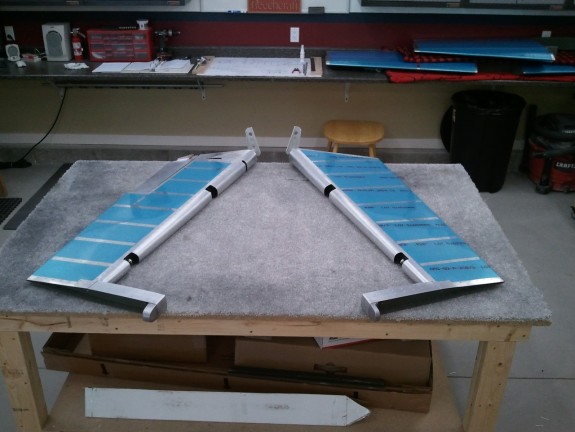
I read up on how to do the roll again since it had been a while since doing the rudder. I remembered that I did not like rolling the rudder but that it was easier due to the thinner skins.
I again decided to use the DanH method and use J/U-Bolts and hold the pipe down while rolling. It worked OK on the rudder so I figured it would work OK on the elevators.
Since it was not fresh on my mind I felt like I was re-learning the roll all over again.
I think this time the pipe put too tight a radius on the skin, and since they are thicker than the rudder, they were less willing to massage out. Rather than really mess a part up, I decided to accept the roll and close them up.
They seemed to go together nicely and I have really nice seams too.
I just do not like the segmented radius look. I know that I nor anyone else will never see them once mounted.
I did a quick test with them in place on the Horizontal Stabilizer and they appear to not have any clearance/rubbing issues.
So I ask the group, are these good enough?
Left

Right

Both




